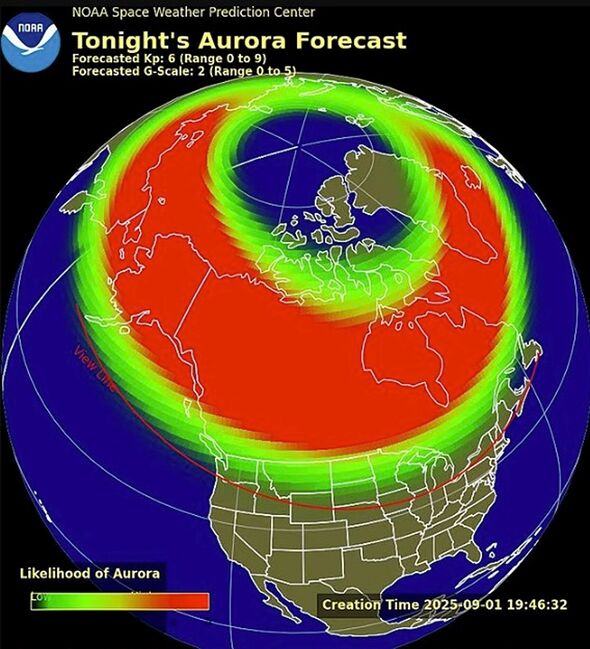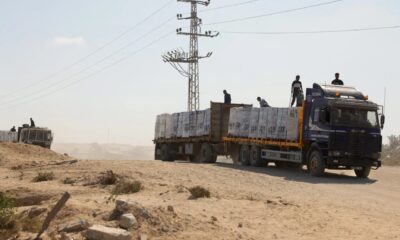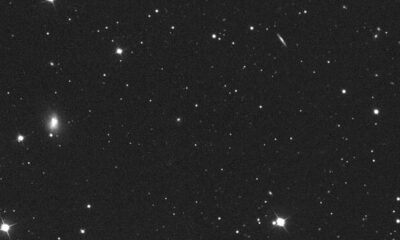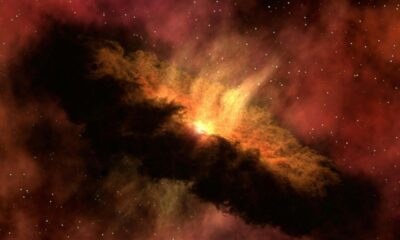Science
Major Solar Storm to Impact Earth Tonight, Promises Stunning Auroras

A powerful solar storm is set to impact Earth tonight, potentially unleashing spectacular displays of the Northern Lights across 18 US states. This event raises significant concerns regarding possible disruptions to power grids and communication systems. Scientists have identified this as a “cannibal” solar storm, a rare occurrence where one massive cloud of charged particles from the sun overtakes and merges with an earlier solar blast, amplifying its effects on Earth’s magnetic field.
Forecasters indicate that this geomagnetic storm could reach G3 (strong) levels by early Tuesday morning, with the possibility of escalating to a severe G4 storm. Such an escalation would heighten the risk of power disruptions across the northern United States, prompting officials to take precautionary measures.
Impact on Infrastructure and Communications
As the solar storm approaches, critical infrastructure faces significant threats. Local power grids may experience dangerous voltage fluctuations and transformer damage, leading to potential outages in affected areas. Beyond power supply concerns, essential services such as radio signals, GPS navigation, and satellite communications could also experience severe disruptions.
The scale of solar storms is measured from G1 (minor) to G5 (extreme). Tonight’s event is expected to fall at the higher end of this scale, which could have far-reaching implications for millions of residents. The storm’s optimal viewing window for the Northern Lights will occur between 02:00 and 05:00 ET on March 19, 2024, when the celestial display is anticipated to peak.
Warnings from NOAA and Radiation Risks
The National Oceanic and Atmospheric Administration (NOAA) has warned that the solar storm, beginning as a G1 to G2 event, may intensify significantly after midnight. NOAA officials stated, “Periods of G3 (Strong) storming are likely, with a chance for G4 (Severe) storm periods, as coronal mass ejection effects persist.” This unpredictable nature of space weather highlights the need for public awareness and readiness.
The incoming solar storm carries additional risks from radiation. It is expected to produce an S1 radiation storm, characterized by a light rain of high-energy particles known as protons. While this radiation poses no direct threat to individuals on the ground, it could adversely affect satellites and pose risks to astronauts in space.
While widespread power outages are unlikely, areas experiencing a strong G3 or G4 storm may see minor grid issues, with localized blackouts affecting thousands of homes and businesses.
Communication systems are also at risk, as solar flares emit powerful X-rays that can disrupt radio signals. NOAA predicts a 20 percent chance that the storm will cause R3 (strong) disruptions, potentially leading to temporary losses of radio contact that could impact critical operations, including emergency services and aviation.
The combination of power grid vulnerabilities, potential communication disruptions, and radiation effects makes this solar storm one of the most significant space weather events in recent years. Authorities and the public are urged to remain vigilant and prepared for the potential impacts as the storm approaches.
-

 Entertainment2 months ago
Entertainment2 months agoAnn Ming Reflects on ITV’s ‘I Fought the Law’ Drama
-

 Entertainment3 months ago
Entertainment3 months agoKate Garraway Sells £2 Million Home Amid Financial Struggles
-

 Health2 months ago
Health2 months agoKatie Price Faces New Health Concerns After Cancer Symptoms Resurface
-

 Entertainment2 months ago
Entertainment2 months agoCoronation Street’s Carl Webster Faces Trouble with New Affairs
-

 Entertainment2 months ago
Entertainment2 months agoWhere is Tinder Swindler Simon Leviev? Latest Updates Revealed
-

 Entertainment3 months ago
Entertainment3 months agoKim Cattrall Posts Cryptic Message After HBO’s Sequel Cancellation
-

 Entertainment2 months ago
Entertainment2 months agoOlivia Attwood Opens Up About Fallout with Former Best Friend
-

 Science2 weeks ago
Science2 weeks agoBrian Cox Addresses Claims of Alien Probe in 3I/ATLAS Discovery
-

 Entertainment2 months ago
Entertainment2 months agoMasterChef Faces Turmoil as Tom Kerridge Withdraws from Hosting Role
-

 Entertainment3 months ago
Entertainment3 months agoMarkiplier Addresses AI Controversy During Livestream Response
-

 Entertainment4 months ago
Entertainment4 months agoSpeculation Surrounds Home and Away as Cast Departures Mount
-

 World2 months ago
World2 months agoCole Palmer’s Mysterious Message to Kobbie Mainoo Sparks Speculation





















